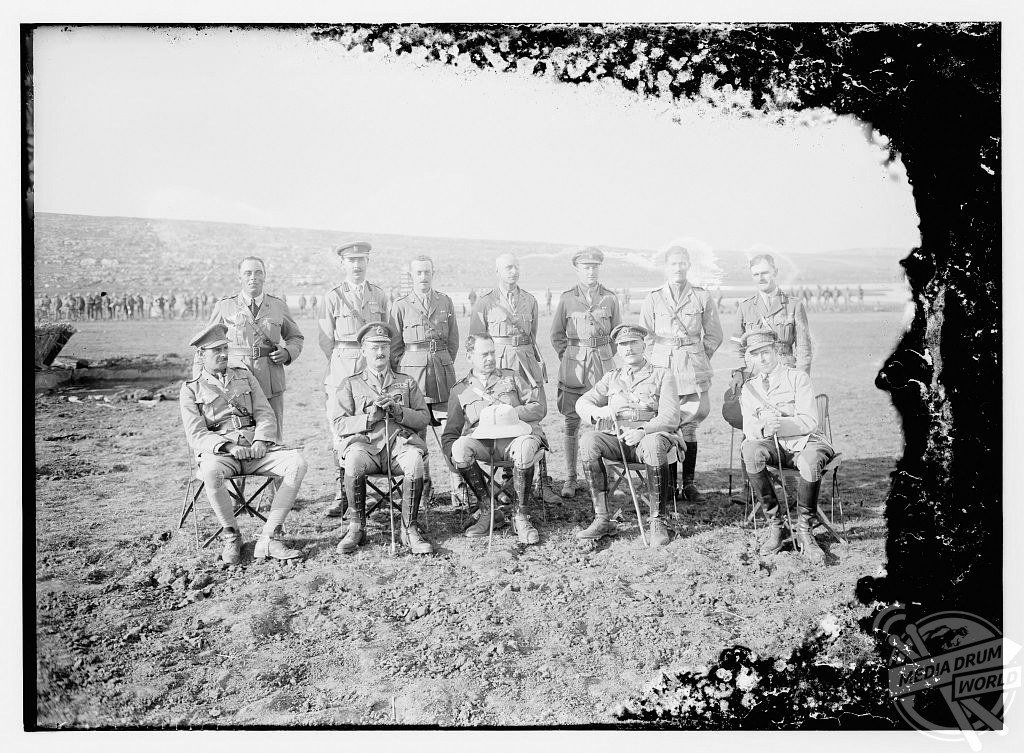By Ben Wheeler
FASCINATING photographs taken exactly one-hundred-years-ago today have resurfaced, showing British war commanders entering Jerusalem to declare martial law, drawing startling comparisons to last week’s events of Western interference in the region.
The hundredth anniversary of Field Marshal Edmund Allenby’s entry into the holy city comes amidst increasing tensions in the region after President Donald Trump’s announcement that the United States will officially recognise Jerusalem as the capital of Israel, a statement that has been met with international condemnation.
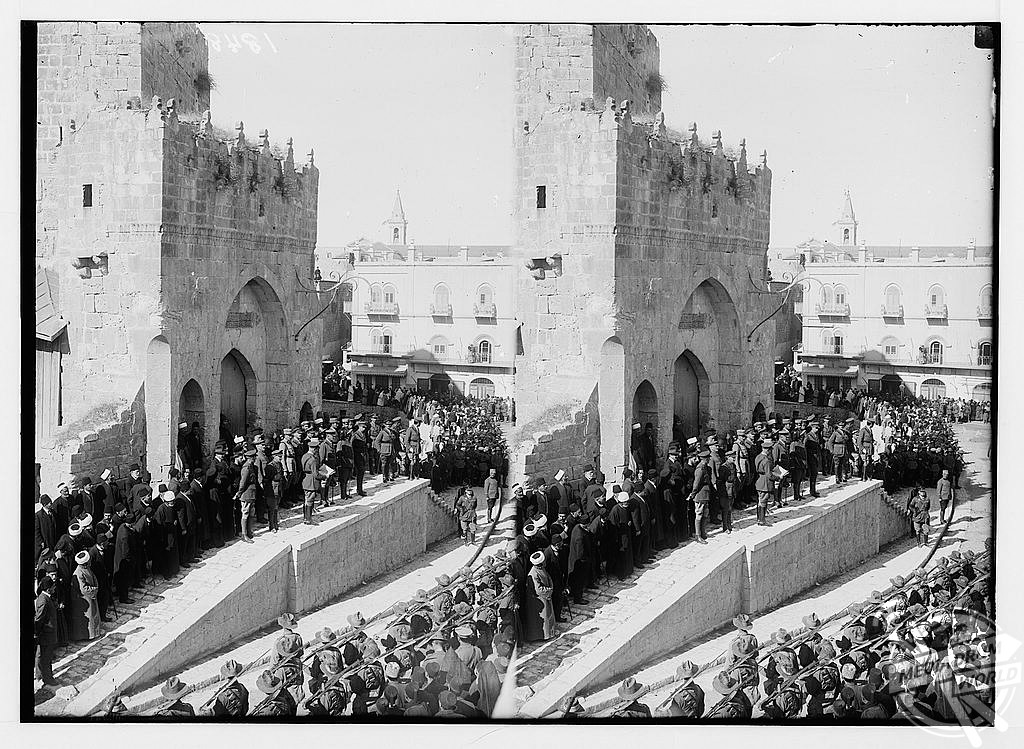
The images reveal Allenby, who was commander of the Egyptian Expeditionary Force (EEF), a British Empire Military formation charged with battling against the Ottoman Empire in the Arab region, entering Jerusalem on foot through the Jaffa Gate to formally claim the city from the Ottomans.
Other photos show Allenby reading his proclamation of martial law to the gathered crowd, whilst an additional snap shows the Field Marshal among colleagues having just accepted the surrender of Jerusalem’s sitting officials.
Allenby’s entry into Jerusalem marked the beginning of the end of the Battle of Jerusalem, which had begun weeks before on 17 December.
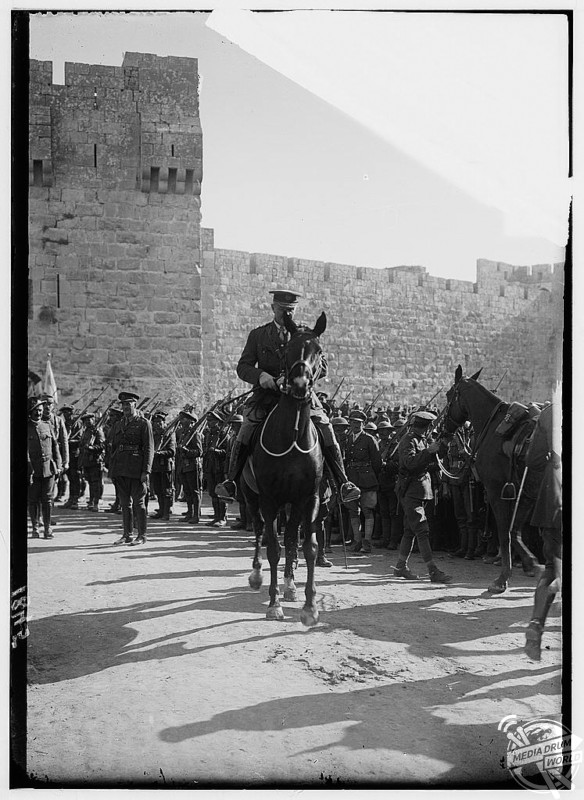
Upon entering the Jaffa Gate, Allenby dismounted his horse together with his officers in deliberate contrast to the German emperor, Wilhelm II’s entry to the city on horseback in 1898, which was not well received by locals.
The residents of Jerusalem saw Allenby’s gesture as a sign of his modesty but also respectful of Jerusalem’s status as a holy city, important to Jews, Christians and Muslims alike.
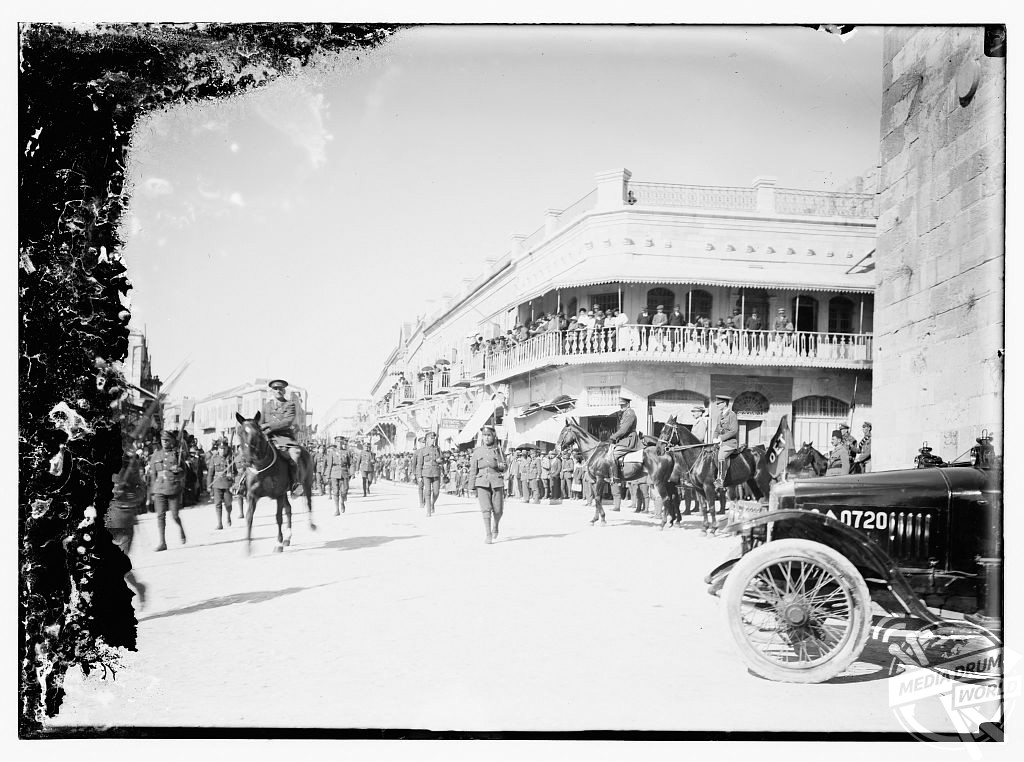
Allenby’s declaration read as follows:
“To the Inhabitants of Jerusalem the Blessed and the People Dwelling in Its Vicinity:
“The defeat inflicted upon the Turks by the troops under my command has resulted in the occupation of your city by my forces. I, therefore, here now proclaim it to be under martial law, under which form of administration it will remain so long as military considerations make necessary.
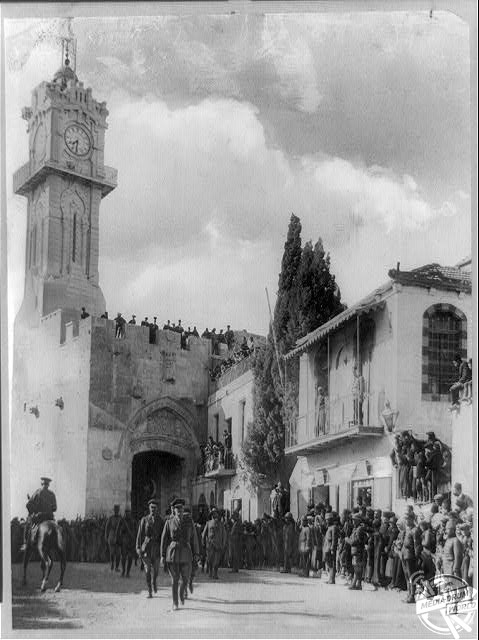
“However, lest any of you be alarmed by reason of your experience at the hands of the enemy who has retired, I hereby inform you that it is my desire that every person pursue his lawful business without fear of interruption.
“Furthermore, since your city is regarded with affection by the adherents of three of the great religions of mankind and its soil has been consecrated by the prayers and pilgrimages of multitudes of devout people of these three religions for many centuries, therefore, do I make it known to you that every sacred building, monument, holy spot, shrine, traditional site, endowment, pious bequest, or customary place of prayer of whatsoever form of the three religions will be maintained and protected according to the existing customs and beliefs of those to whose faith they are sacred.”
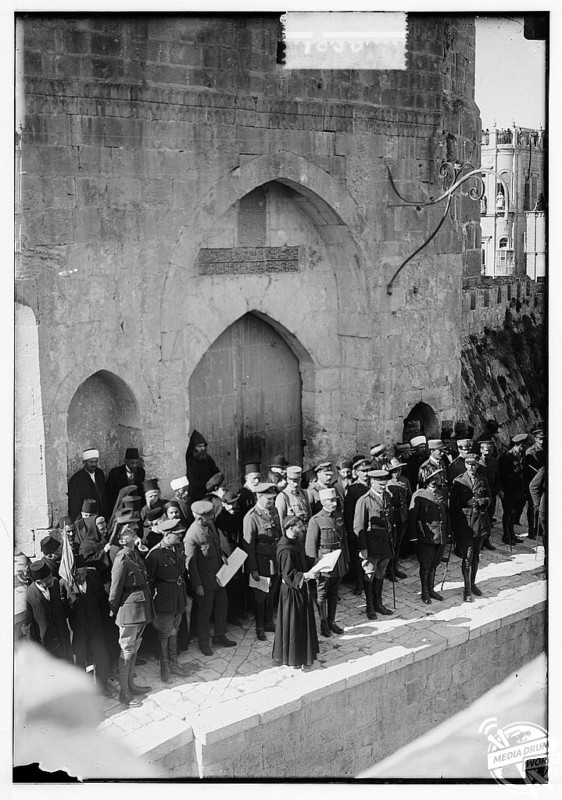
The declaration reflected Allenby’s desire for leaders of all faiths in the city to work together to ensure religious sites of Judaism, Christianity and Islam were all respected, something which appears to be lacking in today’s rhetoric.
He was also mindful of the Islamic propaganda of the Ottomans who had proclaimed jihad against the allies, discouraging the use of crusader imagery by his press officers and going out of his was to insist that he merely fighting the Ottomans and not Islam.
During the EEF’s advance from Gaza to Jerusalem, the British Empire sustained 18,000 casualties whilst Turkish losses amounted to 25,000.

